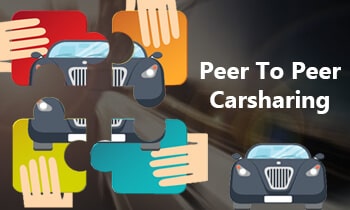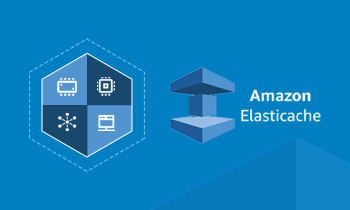The combination of modern technologies and ever-changing market scenarios is pushing every sector to revamp its existing processes and operational infrastructure. However, most companies still focus on legacy applications and end up making potential losses.

Relying on core applications backed by an on-premise dedicated environment limits your growth and hampers your overall business productivity. Sometimes, it can even lead to potential vulnerabilities, data discrepancies, and other shortcomings.
A plausible solution to avoid such incompetence is application modernization. Today’s blog will discuss the importance of this approach and introduce you to some of the proven application modernization best practices that can benefit your business. So, let’s begin.
Why Modernizing Legacy Applications is the Need of the Hour
Having rigid systems in place disturbs your digital transformation journey and exposes your business to an array of unanticipated technical complexities. It also restricts your company from harnessing the state-of-the-art capabilities of the cloud.
As a decision-maker or business professional wanting to innovate, you need to consider migrating to the cloud a necessity rather than an option. But a smooth transition to the cloud is only possible when you are willing to modernize your legacy applications and systems.
App modernization can help you take full advantage of cloud computing while optimizing workflows that perfectly meet contemporary environments. Moreover, it can unlock potential opportunities by helping you,
- Focus on core business competencies and improve team productivity.
- Deliver seamless user experiences with uninterrupted service offerings.
- Streamline business processes and achieve desired operational goals.
- Avoid performance, scalability, and other hidden data security issues.
- Cut overhead costs related to complex app maintenance techniques.
- Keep up with the latest technologies, releases, and software updates.
- Integrate necessary features and functionalities to increase uptime.
- Ensure expected compatibility with desired platforms and devices.
- Support your digital initiatives with complete agility and flexibility.
- Make the most out of SMAC (social, mobile, analytics, and cloud) technologies.
Key Application Modernization Best Practices for Business Growth
Now that you know the importance of legacy app modernization, we can move forward to understanding the most important practices that can transform your applications and tackle all the major challenges that come your way while doing so.
1 Set Measurable Goals for Your Modernization Initiatives
You need to have an application modernization strategy in place that successfully aligns your modernization efforts with measurable business objectives. For instance, visually appealing UI/UX and smooth navigation backed by modern features can generate positive user experiences.
However, to set objectives in line with your initiatives, you need to finalize priorities and the applications you want to modernize in particular. This will not only analyze the impact of your efforts but also help you understand the scalability and reliability of the overall process.
2 Explore Different Modernization Approaches
The most commonly used modernization approaches include encapsulate, rehost, refactor, re-architect, rebuild, and replace. You can start with anyone and later explore the others to ensure a smooth transition to modern technologies.
For instance, you can rebuild your app code or components from scratch without changing their scope. You can then rehost your application to an advanced infrastructure for better agility and scalability.
Else, you can replace older features with new ones and remove all the related obsoleteness from your application. Every application modernization approach brings its own advantages to the table. You need to choose the ones that best suit your requirements.
3 Define a Crystal Clear Project Timeline
Having a proper project timeline is one of the application modernization best practices that you cannot afford to miss out on. You need to have a brief idea of your key objectives, activities, and timeframes (start and end dates).
You should communicate with your team to have a detailed discussion about the set priorities and assigned tasks. This will help you understand the approx time needed to achieve the most important milestones.
You can use specialized software or popular tools like ClickUp, Trello, Asana, ClickUp, JIRA, Basecamp, etc., to plan a realistic timeline for your modernization project.
4 Choose the Right Architecture
Architecture plays an important role in any software modernization project. It determines whether your software is capable of multi-system integration or not. It verifies the level of scalability and security provision.
Choosing the right architecture is a must, especially when you are planning to replace your older software. You need to opt for the ones that have a strong foundation with multiple advantages and fewer limitations.
Additionally, you need to ensure that your chosen architecture is compatible with Cloud Computing, DevOps, DevSecOps, DataOps, Agile (Scrum, Lean, XP, etc.), and other potential automation processes.
5 Prioritize Team Skill Set and Competency
If you want to experience a company-wide transformation, deploying new applications or building a product from scratch is not the only thing to focus on. This kind of change demands the presence of the right skill set and proficiency in your dedicated development team.
As such, you need to implement application modernization best practices like evaluating existing skills and the lack of needed ones. You need to analyze your team members and their capabilities to sustain this change. For example, a project manager is responsible for assigning tasks, tracking progress, leading teams, and so on. Ensure that you have a competent team in place backed by tech architects, DevOps engineers, software developers, UI/UX designers, QA experts, etc. You can also extend your team to overcome skill deficits by partnering with a trusted software development and modernization partner.

6 Focus on Individual Goals, One at a time
Modernization of legacy applications can be quite overwhelming if you perform multiple tasks and redefine strategies at once. It can lead to potential risks and negatively impact your project roadmap.
Hence, you should concentrate on dividing the entire process into smaller chunks. You can start with defragmenting the key aspects like network & storage configurations, app deployment requirements, server necessities, etc.
Later, you can strategize the networking among each component, followed by its deconstruction for different configurations. These separations will help you implement plans to support legacy systems and make the most out of your modernization efforts.
7 Practice Documenting Every Detail
Documentation stands amongst the application modernization best practices that can take your business to the next level. It plays a pivotal role in maintaining your application and supporting your digital transformation journey.
You need to motivate your team to document every single detail from initiation and development to deployment and launch. Ensure to cover all aspects, be it files, programs, features/functionalities, processes, etc.
Moreover, you need to record every change that you introduce to this process. This will help you make the best out of your legacy application modernization roadmap and avoid possible failures.
8 Boost Operational Capabilities with Automation
Your enterprise application modernization plan should focus on speeding up your entire delivery cycle. It should reduce the time to market your application while offering value with quick turnaround times.
But this is only possible when your operations are powered by automation. You need to automate tasks like data management, scheduling meetings, customer support, and more with the help of DevOps or other collaboration tools.
To get detailed insights into your data collection and delivery, you can leverage DataOps practices. Whereas removing silos and ensuring better team collaboration will require integration with XOps.
9 Track KPIs to Identify Discrepancies
Application modernization best practices like tracking the performance metrics can help you discover hidden shortcomings and work on their root cause. It will ensure that your company generates the expected outcomes.
Some of the most important metrics to consider are response time, throughput, CPU utilization, memory usage, navigation time, and so on. Getting hold of these metrics is a way toward real-time change management.
10 Create a Portable Environment
Instead of focusing on adopting a new architecture, you should concentrate on understanding the portability requirements of your legacy software. The more software portability, the better outcomes you get.
Your legacy software modernization process should be based on manifestos like the Twelve-Factor App. Following such principles will help you host your app on-premises and in the cloud seamlessly. You will be able to run your app on Linux or Windows hosts. Besides, migrating quickly to a new environment also becomes easy.
11 Orchestrate Full-stack Visibility
Legacy system modernization is a must. But we cannot deny the fact that modernized apps still require basic communication with legacy systems. Another important factor to consider is their visibility across the system.
You can easily achieve this by following application modernization best practices such as full-stack visibility. It helps you monitor the end-users perspective back to the data center. Moreover, you get the privilege to identify and remove issues that compromise user experience.
12 Migrate Applications to Microservices Architecture
Embracing application modernization technology is important for both hardware and software. A common way of doing this is by shifting to microservices architecture. It simplifies the development process and avoids all dependencies related to the monolithic approach.
Transitioning to containers and microservices can make your apps more flexible and scalable than ever before. It helps in future-proofing while allowing you to make alterations as and when required.
Another important consideration is to rewrite COBOL code with more modern languages like C# or Java. The process can become much easier when combined with the microservices approach as it breaks your app into separate functions.
Conclusion
Modernizing your legacy applications, products, systems, or software can be tricky and complex. But you can easily simplify the process with the right implementation of the aforementioned application modernization best practices.
This will save time, effort, and capital while helping you deliver value-driven services to your target audience. You will get the privilege of migrating to ground-breaking modern applications without compromising on quality.Mobisoft can help you create a robust roadmap to adopt modern tools and technologies that can help you generate profitable outcomes in the long run. Connect with our digital transformation experts to start your app modernization journey right away.

Author's Bio:

Pritam Barhate, with an experience of 14+ years in technology, heads Technology Innovation at Mobisoft Infotech. He has a rich experience in design and development. He has been a consultant for a variety of industries and startups. At Mobisoft Infotech, he primarily focuses on technology resources and develops the most advanced solutions.


